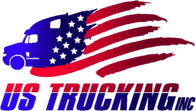Tips for Crossing Intersections
Insurance, the Federal Motor Carrier Safety Administration and the National Safety Council advise commercial vehicle drivers to keep the following points in mind when crossing an intersection of any kind:
Know what is going on around your vehicle by scanning the intersection ahead.
Know where you are going and which lane you should be in.
Slow down when approaching an intersection.
Cover the brake with your right foot in order to reduce reaction time in case you spot a hazard.
Approach the intersection assuming that cross traffic may not see you or may not obey traffic control devices.
Show other drivers what you are doing by communicating your plans with lane position and turn signals.
Before crossing the intersection, look to your left, then right, and then to your left again to check for traffic.
Do not block an intersection while stopped in traffic.
When turning left at an intersection, use the right-hand lane if there are two left turn lanes.
When turning right, protect your lane before turning to keep drivers from trying to squeeze past you.
Keep the sides of your vehicle clean and keep the side marker lights operational. Wipe off reflective tape regularly for better visibility, especially with flatbed trailers.
Watch out for red light runners, especially as traffic lights change from green to yellow to red.
Be alert for drivers whose vision is obstructed due to windows blocked by frost, ice, snow, contents in the vehicle or due to obstructions on or near to the road.
Watch for vehicles partially hidden by blind intersections, alleys or driveways. If you can see only the rear or front end of a vehicle but not the driver, then he or she cannot see you. Be alert, because the driver may pull out into your lane.
Watch for confused drivers who often change direction suddenly or stop without warning. Confusion is common near freeway or turnpike interchanges and major intersections. Hesitation, driving very slowly, using brakes often, stopping in the middle of an intersection, and other unexpected actions are clues that the driver is confused or otherwise distracted. Give them extra room.

This article is Provided by Sunlight Logistics Inc





